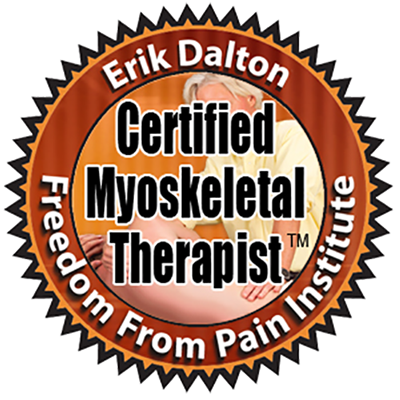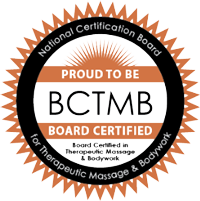News: April 2012
What's really causing your pain?
 Let's say you come to me complaining of wrist pain. After some assessment, I work on ... your shoulder. "But my shoulder doesn't hurt - it's my wrist!" you might think. But somehow, you find that your wrist pain has improved after your shoulder massage. Sound crazy?
Let's say you come to me complaining of wrist pain. After some assessment, I work on ... your shoulder. "But my shoulder doesn't hurt - it's my wrist!" you might think. But somehow, you find that your wrist pain has improved after your shoulder massage. Sound crazy?
Where you feel the pain isn't always where the problem is. If you've been on my massage table, you've probably heard me talk about referral pain. Referral pain is pain felt at an area of the body different from the spot of the actual injury. One common cause of referral pain is a trigger point, which is a hyperirritable nodule within a muscle fiber. When you press on a trigger point, you have a pain sensation elsewhere in the body. Trigger points can often mimic other common conditions. For instance, a trigger point in a hip muscle may refer pain down the side of the leg, which feels similar to sciatic nerve compression syndromes. Or a trigger point in the neck may cause a headache. We don't know exactly why trigger points refer pain, but they have been found to behave in predictable patterns. (Check out one of my previous newsletters all about trigger points.)
Another way pain can be referred is through a dermatome, an area of skin supplied by a single nerve root extending from the spine. When that nerve is impinged, pain can be felt anywhere along the dermatome. For instance, nerves exiting the cervical spine in the neck have distributions into the shoulder, down the arm, and even into the fingers. Pain in the wrist can easily be mistaken for carpal tunnel syndrome, when the real problem may actually be a nerve compression in the neck. Click here for a trippy dermatome map of the whole body.
Postural and mechanical imbalances can also cause pain somewhere other than their source. A good example is someone with plantar fasciitis, or pain and inflammation on the bottom of the foot. Let's say that person sits at a desk all day leaning to the left. Their lower back muscles may become chronically tight and short, causing them to pull up on the left side of the pelvis. Now the left hip is higher than the right, which will cause the left leg to be functionally shorter than the right. When the person walks, that shorter left leg will cause the foot to drop down farther to reach the ground, which often causes it to strike the ground with more force. Repetitive pounding on the bottom of the left foot can cause pain and inflammation, leading to plantar fasciitis. And all because that person didn't read my newsletter on proper computer ergonomics! In this case, a massage therapist can massage the foot all day, but if the tight lower back muscles are not addressed, faulty walking mechanics can continue and the foot pain will persist.
So you see, it's not so crazy to have your pain alleviated when another area of the body is massaged. We can never assume the problem lies where the pain is felt. It just takes a bit of detective work to figure it out!
What's new with me ...
Spring is my favorite season! Jesse and I have enjoyed walking around the city and taking photos of the flowering trees. I loved seeing my family for Passover and eating my mom's delicioius matzoh ball soup. Yum!

Call or text me today
917-359-8641
I'd be happy to answer
any questions you have!
Massage@Rachel-Richards.com
Subscribe to my Youtube channel!
Did you know?





